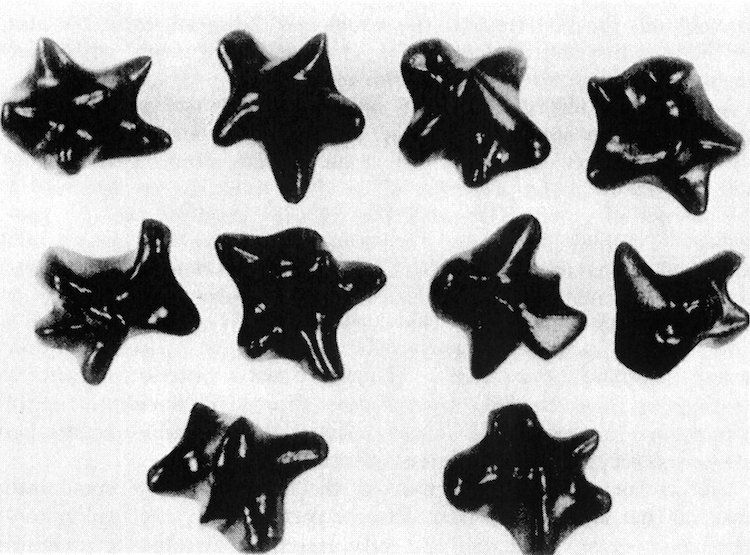
Set of irregularly-shaped objects among which subjects had to find a reference object. Nearly perfect performance was achieved if they could touch and rotate these objects as opposed to just looking at them in a static pose. Figure adapted from "The senses considered as a Perceptual System" by J.J, Gibson (p.124) with permission.
There is compelling evidence that perception in humans and animals is an active and exploratory process. For example, Gibson showed that physical interaction further augments perceptual processing beyond what can be achieved by just looking at the environment. In the specific experiment, human subjects had to find a reference object among a set of irregularly-shaped, three-dimensional objects as visualized in the above figure. They achieved an average accuracy of 49% if these objects were shown in a single image. This accuracy increased to 72% when subjects viewed rotating versions of the objects. They achieved nearly perfect performance (99%) when touching and rotating the objects in their hands. This example illustrates that biological perception and perceptually-guided behavior intrinsically rely on active exploration and knowledge of the relation between action and sensory response.
Recent approaches in robotics follow the insight that perception is facilitated by interaction with the environment. These approaches are subsumed under the term of Interactive Perception (IP). It provides the following benefits: (i) interaction with the environment creates a rich sensory signal that would otherwise not be present and (ii) knowledge of the regularity in the combined space of sensory data and action parameters facilitate the prediction and interpretation of the signal.
